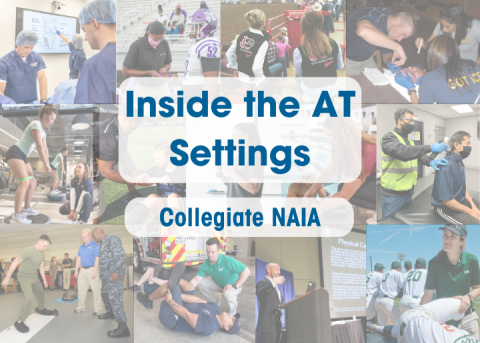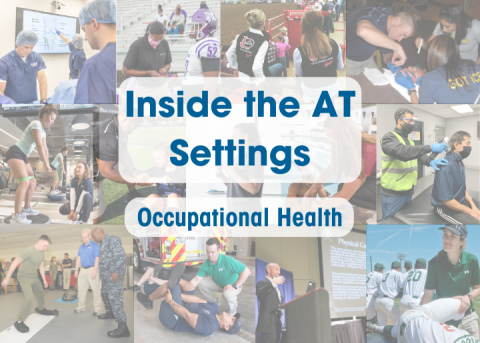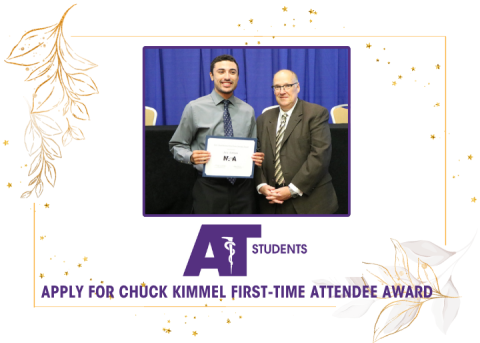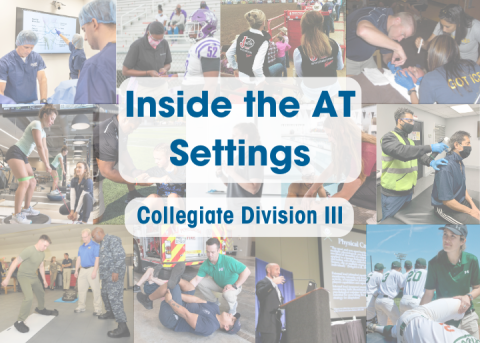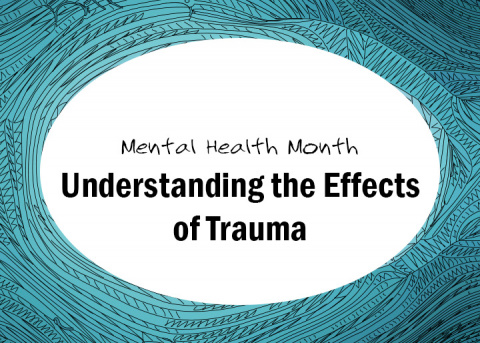
By Kelsey Bains, MA, ATC, NATA ATs Care Commission
As athletic trainers, it’s imperative that we understand and investigate the effects of trauma among both our athletes and our colleagues. The changes in everyday life and mental health cause us to practice our profession with a new perspective. Athletic trainers continue to navigate the dynamic climate of society, mental health and the new and ever-changing procedural norms as we begin to emerge into post pandemic conditions.
Throughout this process, it has become glaringly clear that one’s hardiness and resilience play a powerful role in one’s ability to cope and navigate overall mental health. The reality of this condition is highly evident in the role of caretaker or service provider. Athletic trainers often feel responsible to comfort those around them in all aspects of condition; including, but not limited to physical, emotional and psychological. This feeling of responsibility is oftentimes a daunting task as we understand that every person is different, and within that, every perspective and mindset varies, as well. This presents us with questions about how we can navigate the aftermath of loss while still supporting ourselves and our athletes. To investigate this fully, we need to first highlight the role that trauma plays in connection with the brain’s metabolism of traumatic incidence
Trauma is an elusive concept to define. Peter Levine, one of the leading experts on trauma, said that, “we become traumatized when our ability to respond to a perceived threat is in some way overwhelmed. […] In short, trauma is about loss of connection – to ourselves, to our bodies, to our families, to others and to the world around us.”
It’s important to recognize the role that perception plays in trauma. In other words, if our tolerance or ability to cope has been challenged by our current conditions, our perceptions of being overwhelm may be altered, resulting in trauma. The cause of the trauma is not necessarily as important as the recognition that it exists, which can create a perceived threat, resulting in the inability to manage it. This perception of threat results in a physiological response, which varies from person to person.
Research demonstrates that trauma is intrusive and results in an overwhelming arousal of our autonomic nervous system. The autonomic nervous is composed of three parts: the sympathetic, parasympathetic and enteric systems. Research has discovered that there are multiple states of the nervous system in response to real and perceived stress/trauma.
One of the ways research is demonstrating multiple conditions of the nervous system is illustrated in the polyvagal theory. This theory describes three main conditions. First, hyperarousal (fight or flight) is activated as a response to our survival state coming from the sympathetic nervous system. Second, hypoarousal (freeze) is our most primitive pattern in which our dorsal vagal is activated leading in a state of emergency and complete shutdown. Last, rest and digest is a response from our parasympathetic nervous system, specifically the ventral vagal complex, demonstrating safety and desire for social engagement. This knowledge demonstrates that a person’s ability to manage a situation depends upon which state/stage they may currently be in and/or the state they may naturally respond (from prior emotional conditioning) due to their own past traumas.
Therefore, navigating the aftermath of loss is not viewed from a two-dimension perspective, but instead needs to be viewed in a four-dimensional perspective. If one is entering into a hyperarousal state, it’s appropriate to down regulate. One can down regulate by putting their feet in the grass, journaling, meditating and/or stretching neck and spine. In contrast, if one is entering a hypoarousal state, they might consider an ice bath, checking in with each of the five senses, dance, breathe work or lifting heavy weights to integrate themselves back into their body.
It’s important to recognize the state an athlete is in in order to arouse curiosity about their condition; questioning their emotional triggers and responding to what is coming to the surface for them. This analysis will allow you to maneuver the athlete into the cognitive state of action.
As professionals, it is clear that we must support one another. We benefit the athlete by being available and present for them. As caretakers, we have the opportunity to demonstrate support, offering athletes the tools to self-soothe by recognizing their own emotional responses to stress and trauma. We can offer and create a safe space where athletes can share their concerns. This same support is available for the athletic trainers. If you ever feel that you need this type of support, or you know someone who does, NATA is a resource with a group of individuals trained in critical incidence. Please don’t hesitate to reach out to ATs Care when in need of additional support!
References
Dana, D., & Porges, S. W. (2018). The polyvagal theory in therapy: Engaging the rhythm of regulation. W.W. Norton & Company.
Porges, S. W., Porges, S. W., & Porges, S. W. (2011). The polyvagal theory: Neurophysiological foundations of emotions, attachment, communication, and self-regulation. First Edition ; the pocket guide to the polyvagal theory: The transformative power of feeling safe. first edition. W.W. Norton & Company.
ROSENBERG, S. T. A. N. L. E. Y. (2019). Accessing the healing power of the vagus nerve: Self-exercises for anxiety, depression, trauma, … and autism. READHOWYOUWANT COM LTD.
Levine, Peter A. (2005) Healing Trauma: a Pioneering Program for Restoring the Wisdom of your Body. Sounds True.

